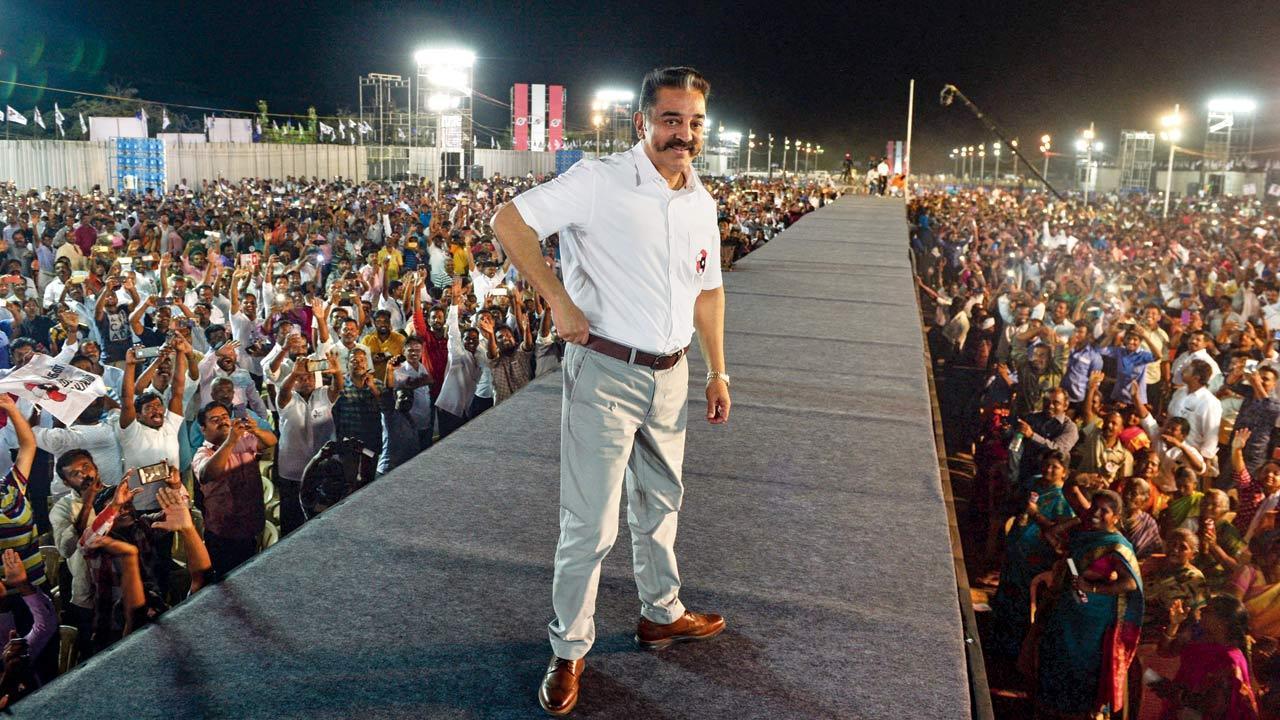Home / Sunday-mid-day / / Article /
The good bad man
Updated On: 21 July, 2024 07:55 AM IST | Mumbai | Team SMD
In this excerpt from Kamal Haasan’s biography, author K Hariharan dwells into why Nayakan, where he played a modern gangster who lived in the greys, was a turning point in the superstar’s career

In this photo taken on March 24, 2019, actor-turned-politician Kamal Haasan, founder of the Makkal Needhi Mayyam party, is cheered by supporters at an election rally in Coimbatore, Tamil Nadu. On a humid night drummers and dancers heave to Haasan’s blockbuster hits, whipping a huge crowd into ecstasy just as the megastar himself steps onto stage. Pic/Getty Images
If there is a Tamil film that heralded the new phase of ‘liberal India’ post Rajiv Gandhi in the most definitive manner, it would be Nayakan (The Hero; 1987). It shook scores of filmmakers and made all the Bollywood bigwigs sit up in awe. What Kamal could not achieve with films like Ek Duuje Ke Liye and Saagar (1985), he did with this film. I remember how most filmmakers and technicians in Bombay unanimously felt that here was a landmark film. Kamal started this movie with a determination of experimenting with film noir in its truest manner, paying tribute to its founders such as Elia Kazan and Francis Ford Coppola, along with actors such as Marlon Brando and Humphrey Bogart. And he did it with the kind of confidence few actors of his era could exude. In the scene where he admonishes his aides on the terrace, one can also see him paying a warm tribute to M.R. Radha, an actor for whom he had very high regard.
This film was truly a ‘glocal’ experiment by a group of spirited Chennai- based cineastes like Mani Ratnam, P.C. Sriram, Raja Krishnamoorthy and Bala Kumaran, who joined hands with two superstars, Kamal—who had nayakan and oru kaidhiyin diary 107 done over 125 films by then—and Ilaiyaraaja, who was scoring for his 400th film. Together they decided to reposition the cinema of Madras as the ‘real’ national cinema. Sriram’s high-contrast imagery, Ilaiyaraaja’s period music and Mani Ratnam’s amazing control on sequential rhythm along with Kamal’s controlled yet nuanced performance would set some of the ground rules for what would be soon called the global ‘Bollywood’ style of transnational Indian cinema. The theme song, ‘Thenn pandi seemayilay’ (‘On the borders of a southern Tamil landscape’), sung both by Ilaiyaraaja and Kamal, remains a benchmark for all Southern filmmakers when they compose for an idyllic rural throwback.




